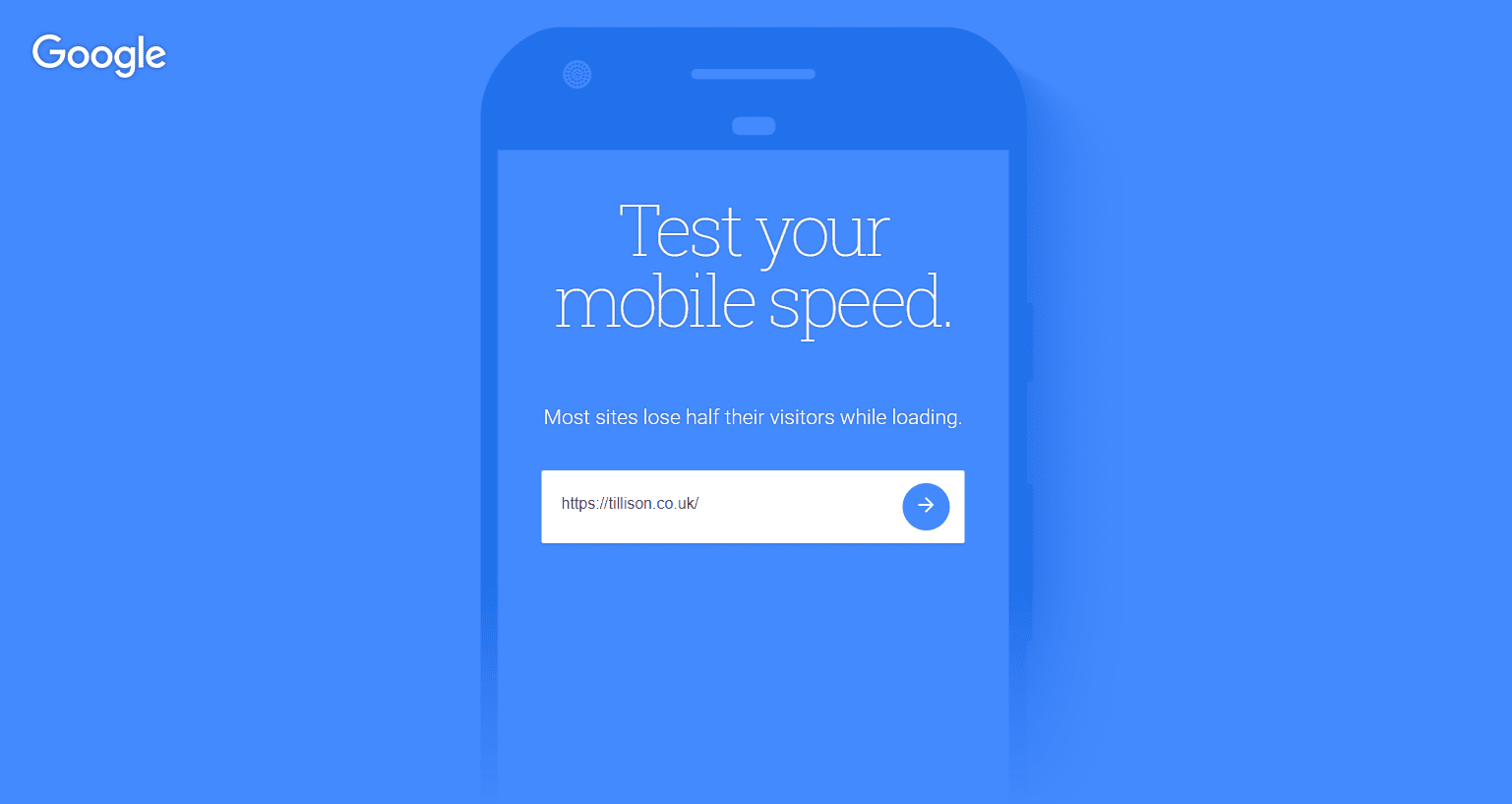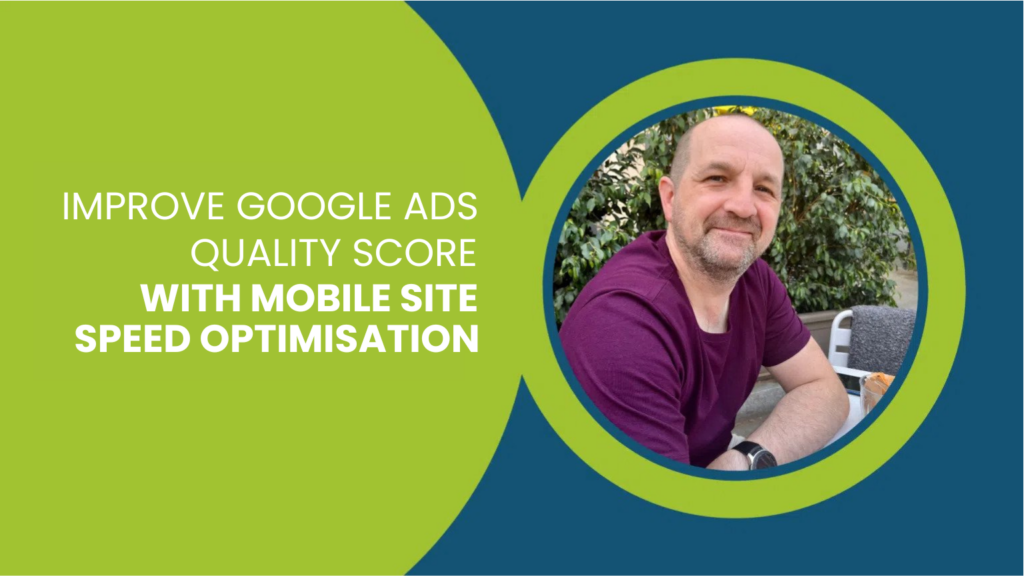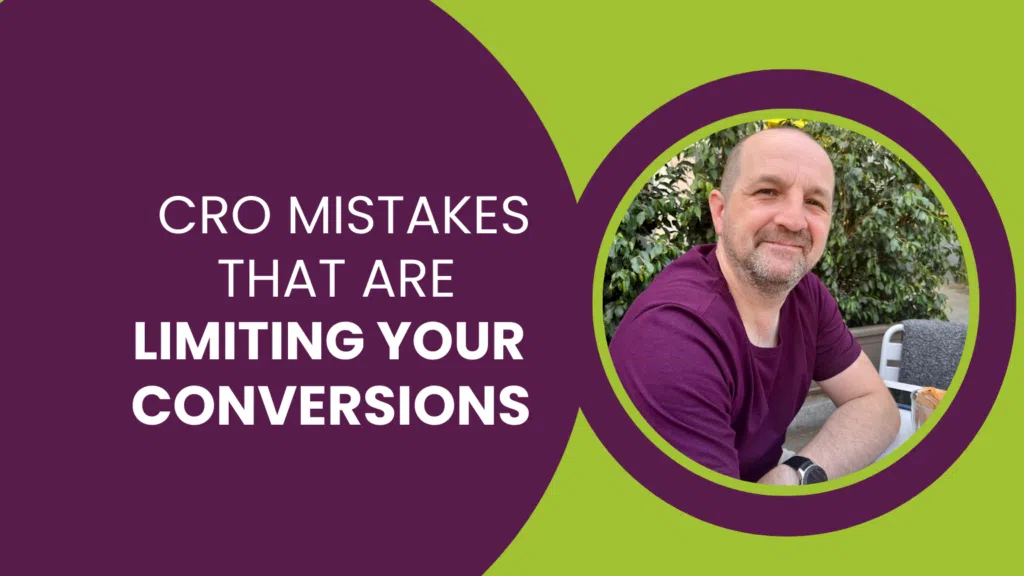Having a high Google AdWords Quality Score holds great importance to eCommerce businesses, or to anyone trying to rank ads in general. Earlier this year, Google announced that, starting in July, mobile site speed will become a major factor in determining your AdWords Quality Score.
This shouldn’t necessarily come as a huge shock to eCommerce retailers, considering the fact that site speed has always played a prominent role in your Quality Score, not the mention the hard-to-miss dominance of mobile web browsing.
It remains to be seen how ‘major’ an impact mobile site speed will have on your Quality Score, but seeing as 73% of mobile internet users say that they’ve encountered a website that was too slow to load – according to Kissmetrics – it’s well worth considering mobile site speed optimisation. After all, the higher your quality score, the better your chances of a higher return on investment.
Quality Score: why does it matter?
One of the main reasons to push for a high Quality Score would be to improve your Google AdWords rankings – having a good ad ranking will make it a lot easier to get more traffic to your site.
Firstly, your ad is going to appear higher up in relevant Google searches and be presented to more people than before, therefore increasing your AdWords impressions. Secondly, having a good Quality Score will decrease the cost per click (CPC) on your ads. So you’re getting good rankings in Google and saving money in the process – it’s a win-win situation.
So, how important is the quality score?
The quality score is incredibly important, especially for getting your keywords to rank in a higher ad position without having to increase your bids. This has a huge influence on helping people assess their budget because higher quality scores usually result in lower costs per click.
Overall, a higher quality score is Google’s way of recognising that your ad is relevant to the people you’re trying to attract to your website therefore what your creating should be effective for increasing traffic.
What affects the quality score?
Many factors contribute to your quality score, including the click-through rate (CTR), which is the estimate of how frequently your ads will be clicked on by users. The CTR rating ranked as either above average, average or below average can help a business decipher whether the keywords in their ad will help it perform well.
The landing page experience is rated on how relevant your landing page is in relation to the clicked ad it is also rated on the landing pages user experience. It is determined by whether Google believes the user will be able to find what they’re looking for on your landing page or if they are likely to go back to the Google results page.
Another factor is your ad relevance. This measures how closely your keyword relates to your ads. Always include your keywords in your ads where possible.
The past performance of similar AdWords campaigns can also affect your quality score. If Google recognises that previously that keyword hasn’t performed very well in ad campaigns, then this is going to decrease your score. It’s advised that you re-evaluate your choice of keyword for more successful ones.
Google Ads Quality Score factors
The AdWords Quality Scoring System already takes several components into account, so before you integrate mobile site speed optimisation into your AdWords strategy it’s important to make sure you’re already optimising the following:
Click-through rate
As this video from our MD Mark Tillison explains, the AdWords Click Through Rate (CTR) plays such a big part in the AdWords Quality Score algorithm, and there are a small handful of crucial methods to increase your campaign CTRs. These include – but are not limited to – keyword intent, ad copy and position, and brand equity. Optimising your click-through rates can result in more traffic, lower average CPCs and increased sales.
Keyword relevance
Continuously researching for new, more relevant keywords to incorporate into your AdWords campaigns, including long-tail keyword opportunities that can contribute to increasing your overall traffic, is vital to improving your AdWords Quality Score. Dividing these keywords into tailored ad groups can also help towards creating more effective ads overall.
Landing page experience
Your landing page is the URL people arrive at after they click your ad, and a poor landing page experience could result in your ads being shown less often. Methods suggested by Google for improving your landing page experience include the curation of original and relevant content, promoting transparency on your site and – funnily enough – optimising your mobile site speed.
Google Ads performance history
While it’s been disputed that your AdWords account history doesn’t directly affect your Quality Score, PPC Hero says that maintenance of your performance history “will allow AdWords to monitor your campaign’s progress”, and that accounts that have been active for longer with a “rich performance history” are typically favoured by AdWords.

Mobile site speed test
The obvious place to start with mobile site speed optimisation is by running a site speed test. Google has built a tool called Test My Site, which is free and incredibly easy to use. Simply enter your website URL and it will be tested on a 3G standard connection, seeing as 70% of mobile network connections globally will occur at 3G or slower speeds through 2020.
Test My Site will also run JavaScript, test the mobile usability of your site and analyse it up against competing sites within your industry before giving you a summary of its mobile site speed analysis. This summary includes the loading time on 3G – a time of three seconds or less is deemed ‘excellent’, up to five seconds is ‘good’, up to 8 seconds is ‘fair’, and anything longer is considered ‘poor’.
From there, you can opt in to receive a more comprehensive report from Test My Site by email that – depending on your site’s score – offers a range of mobile site speed optimisation tips.
Mobile site speed optimisation methods
Refreshing the cache
Leverage browser caching is a good system as it stores files and data such as images, CSS and JavaScript in the server instead of having to load these files every time the site is accessed. Instead of being requested from the server all the time, the cache will then be remembered, therefore speeding up the site for everyone.
Installing mobile site speed plugins
If you’re looking to improve your mobile site speeds, there are many different plugins you can easily install on your content management system to help you out. For example, if you are using WordPress as your CMS, AMP for WP is a great plugin to get you started. This automatically adds functionality from the Accelerated Mobile Pages (AMP) Project – a Google-led initiative to help publishers create mobile-friendly content and optimise its rendering and delivery – to your WordPress site.

Optimising your images
Image optimisation is a very simple task to improve mobile site speed. If you are uploading large image files to your site, it’s going to take a lot longer compared to smaller ones. Using a file format such as Portable Network Graphics (PNG) or JPEG will help with compressing images into smaller files. It can also be as simple as making the images smaller in size on your website, or just using fewer images altogether. This doesn’t mean you shouldn’t have images on your site, just don’t overload it.
Run outstanding updates
It may seem daunting to run several updates, and more tempting to keep leaving them ‘for another time’. However, it’s always a good idea to go through your plugins and other files on your website and update these. If the update exists, then that means the plugin – or whatever you’re updating – has been improved and could potentially be faster compared to its previous incarnation.
Minify CSS and JavaScript
Removing unnecessary characters from your HTML code – such as comments and new line characters – can help speed up your site. The reason this helps speed up loading times on your site is that it simply reduces the amount of code that has to be requested from the server.
Until Google’s changes come into effect in July, it’s obviously hard to tell how significantly your AdWords Quality Score will be affected by your mobile site speed. However, this opens up another reason to push for better site speeds – some eCommerce businesses believe that mobile site speeds are not a big priority, when they are in fact a huge priority. Hopefully Google’s announcement will get businesses to notice that mobile site speed optimisation is more of a priority than ever before.
Still having issues with improving your Google Ads quality score? Let us know in the comments, or click below to speak with one of our AdWords specialists and find out more about our AdWords training courses.
Other Ways to Improve Your Google ads Quality Score
- Use dynamic keyword insertion in your ads to make them as relevant as possible. Dynamic keyword insertion only works if your keyword has a quality score of greater than 3.
- Group highly relevant keywords together to keep the traffic high for each Ad Group.
Where possible, make highly specific landing pages for your keywords. - Delete or pause poorly performing keywords, or move them to more relevant ad groups with more relevant ads, landing on more relevant landing pages.
- Try adding phrase and/or broad match variations of exact match keywords you are bidding on to increase traffic volume.
Recent Google Ads Blog Posts










